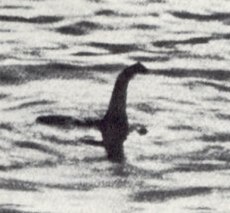The Enduring Mystique of Loch Ness: Myths and Discoveries

Introduction
Loch Ness, a large freshwater lake situated in the Scottish Highlands, has captivated imaginations and sparked curiosity for centuries. Renowned for its haunting beauty and the legendary Loch Ness Monster, or “Nessie,” the loch is a prime tourist attraction and a subject of scientific inquiry. The allure of the Loch Ness Monster has raised questions about the depths of the lake and what secrets may lie within, making it both a compelling mystery and a vital part of Scottish cultural heritage.
Recent Events and Sightings
Recent months have seen a resurgence in public interest regarding Loch Ness, coinciding with several reported sightings of the fabled creature. In early October 2023, a tourist reportedly captured a video that seems to show an unidentified creature swimming in the loch, sparking renewed debate among cryptozoologists and sceptics alike. While many believe these sightings to be hoaxes or misidentifications of common wildlife, they continue to ignite enthusiasm and draw tourists to the scenic region.
Scientific Research and Discoveries
In addition to anecdotal sightings, there has been a serious scientific effort to explore Loch Ness and its inhabitants. A recent study conducted by a team of researchers from the University of Glasgow employed advanced sonar technology and deep-sea exploration techniques to map the loch’s floor and study its ecosystem. Their findings indicated that there are indeed large organisms inhabiting the loch, although none are conclusively linked to the legend of Nessie. The exploration highlighted the unique biodiversity of the loch and will undoubtedly contribute to our understanding of freshwater ecosystems.
Cultural Impact and Significance
While scientific efforts are essential in demystifying Loch Ness, the cultural impact of the legend cannot be understated. The Loch Ness Monster is a symbol of Scottish folklore and continues to be a source of inspiration for artists, writers, and filmmakers. It also plays a significant role in the local economy, as the myth of Nessie draws thousands of tourists to the region annually, substantially contributing to local businesses and conservation efforts.
Conclusion
The Loch Ness Monster may remain an enigma, but its presence has undeniably shaped not only the landscape of Loch Ness but also its cultural identity. As scientific research continues to unfold and new sightings emerge, the legend of Nessie persists, ensuring that Loch Ness will continue to be a hotspot for both researchers and curious tourists alike. Looking ahead, as technology advances, the possibility of uncovering new truths about Loch Ness and its elusive monster remains an exciting prospect, keeping the spirit of exploration and mystery alive.
You may also like

Exploring Southampton: A Hub of Culture and Growth

Discovering India: Culture, Economy, and Recent Developments
